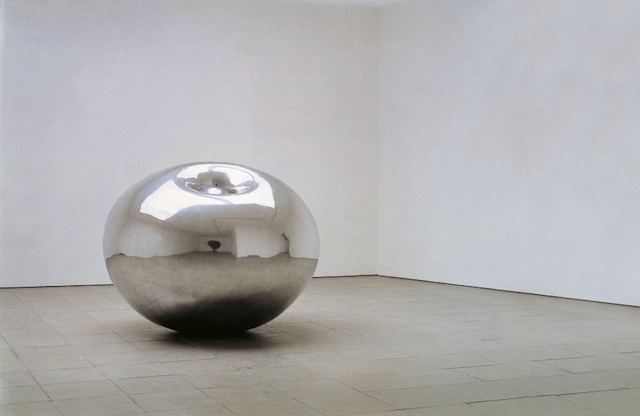Photos: How The Bean Was Constructed A Decade Ago
By Emma G. Gallegos in Arts & Entertainment on Sep 17, 2015 7:50PM
Chicago first got a glimpse of Anish Kapoor's Cloud Gate—better known as The Bean—a decade ago. Since then, it has helped make Millennium Park a major tourist attraction—second only to Navy Pier—and has inspired a million mirrored selfies and at least one copycat.
DNAinfo found a treasure trove of photos in the Chicago Public Library's digital collection that show Anish Kapoor masterpiece from start to finish. It shows the long, arduous and expensive process to make a computer simulation in 1999 turn into a seamless stainless steel civic treasure in the span of six years. The different parts of The Bean were manufactured in Oakland and put together in a test run before shipping it to Chicago for the final construction.
Kapoor described his vision to The Chicago Tribune in 2004: "What I wanted to do was to make a work that would deal with the incredible skyline of Chicago and the open sky and the lake but then also be a kind of gate. You know, the tradition of public sculpture is for the gate, the archway, the square to flow within [the landscape] rather than be an object decorating it."
Here are a few other facts about The Bean's creation:
The Bean, by the numbers
The stainless steel sculpture is 66 feet long, 33 feet high and 42 feet wide. It weighs 110 tons. 168 plates were welded together to look seamless. In 1999, it was estimated that it would cost $6 million to put together but the final tally was $23 million. But don't worry, taxpayers: donors were footing the bill on this one.
Originally, Jeff Koons was supposed to have another piece in Millennium Park, but that got axed so The Bean could become the park's centerpiece.
Koons proposed a project that was 150 feet tall, made of glass and steel. He wanted an observation platform up at 90 feet in the air with a slide that would carry people back down. A sticking point in the project was that it was going to be tough to get disabled people up and down the platform. It would have required an elevator. And also, the committee that ultimately chose Cloud Gate very much liked the idea. So Koons was out. Ed Uhlir, project design director for Millennium Park, told The Tribune, "It became very problematic, and the committee liked Anish's work so much that they basically said, `We're not going to do it in the garden, but we'll move it, and goodbye, Jeff.'"
The Bean was supposed to be in a different part of Millennium Park.
Once Jeff Koons' piece got the axe, The Bean moved to take its place. Originally it was supposed to be southeast of its current location in the Lurie Garden. But the move was necessary to help support the weight of the sculpture, and it also made the piece the focal point of the park. Kapoor agreed the move was good, though he had his beefs. He told the Tribune, "I'd rather it wasn't so close to the skating rink, to be perfectly honest. But I think it will survive perfectly well where it is."
Kapoor says that this 1995 sculpture was the precursor to Cloud Gate.
It was called "Turning the World Inside Out":

Here's the rest of Kapoor's work (a lot of it is stunning!).
Cleaning The Bean is quite a process.
So please don't vandalize it (duh) or even kiss The Bean (especially if you're wearing lipstick!)
Curious City: How do they clean the bean (Cloud Gate) in Millennium Park? from WBEZ on Vimeo.